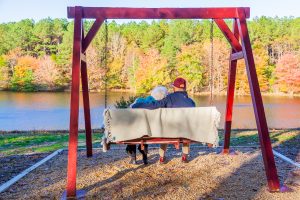 If you or a loved one is considering their senior living options, you likely have begun doing research on retirement communities. Or perhaps you have a loved one in need of long-term care or memory care and staying in the home will not be safe for much longer. With all of the choices available (especially in larger cities), it can be a lot to take in so the decision process can take time. Some senior living decisions are needs-based and progress much quicker, while others are more preference-based and can take months or even years.
If you or a loved one is considering their senior living options, you likely have begun doing research on retirement communities. Or perhaps you have a loved one in need of long-term care or memory care and staying in the home will not be safe for much longer. With all of the choices available (especially in larger cities), it can be a lot to take in so the decision process can take time. Some senior living decisions are needs-based and progress much quicker, while others are more preference-based and can take months or even years.
The timing conundrum
Ideally, one should not wait until they need to move to begin planning. If for no other reason, this is problematic because of the very subject being addressed here—there could be a wait list for the facility you like best. The wait list could be anywhere from a just a few months to a few years. One of the challenges of planning ahead for housing and long-term care needs is that it can be hard to foresee exactly when you will need it. It could happen slowly with the natural aging process or the progression of a degenerative disease, or it can occur quickly with an illness or injury. So, it is advisable to get on three or four waiting lists if you are looking at a community for yourself or a family member. This way, when the time comes and you need care, you are hopefully near the top of the list for at least one facility.
If you are eyeing a continuing care retirement community (CCRC, also known as a life plan community) another consideration is that many providers require new residents be able to “walk in,” that is, they must be relatively able-bodied when they first move to the community. In fact, many life plan communities have an active base of residents who live independently today, but want to be someplace where care is available to them when needed. Most continuing care retirement communities maintain an assisted living and/or healthcare center in addition to offering independent living to accommodate the care needs of residents.
How waiting lists work
 Most providers will require a deposit in order to add your name to the wait list; the amount can range from a few hundred dollars to a few thousand. In some communities, this deposit may be refundable if you change your mind or get into another facility first. Always ask about the waiting list refund policy. As it relates to assisted living facilities in particular, sometimes the refund will only be paid in the event that your healthcare needs have advanced beyond a level that can be served by the community.
Most providers will require a deposit in order to add your name to the wait list; the amount can range from a few hundred dollars to a few thousand. In some communities, this deposit may be refundable if you change your mind or get into another facility first. Always ask about the waiting list refund policy. As it relates to assisted living facilities in particular, sometimes the refund will only be paid in the event that your healthcare needs have advanced beyond a level that can be served by the community.
Many CCRCs also have waiting lists. Yet, the waiting lists for CCRCs are not necessarily for assisted living or nursing care. When applicable, waiting lists for CCRCs are often associated with getting an independent living residence. When adding your name to a list, you will typically specify which type of unit you desire, e.g., a patio home, a 1 or 2-bedroom apartment, etc. When a resident living in your desired unit type moves out, often because their needs have progressed and they are transferring into the on-site assisted living or healthcare facility, then the unit will become available to you.
Types of Wait Lists
There are two common forms of wait lists that you will find at various facilities.
The open-ended wait list is the more flexible of the two types.
When your name reaches the top of the list, you are not required to move in immediately; you can keep your top position on the list and wait until the next desired unit opens up. The challenge with this type of list is that it gives an inexact picture of how many people are actually ready to move to the community, so it can take a long time for your name to come to the top slot.
 Some facilities have a “three strike rule” wait list.
Some facilities have a “three strike rule” wait list.
As the name might suggest, for these communities, if you get to the top of the list and turn down that opening three times, you get bumped back to the bottom of the list. You will even run across a few communities that have a one strike rule for their lists.
Once you are on the waiting list, CCRCs or other retirement communities frequently will offer a variety of perks to future residents—maybe unlimited use of their pool and exercise facility, or access to other community events and activities. In fact, a growing number of CCRCs are beginning to call their wait list a “membership.” Residents-to-be should take advantage of this benefit as it helps begin the process of assimilating into the community and meeting future neighbors, even before living there.
It is also good to be aware that some communities will have an internal waiting list. If you find yourself in a situation where you need (or want) to move into the community and your preferred unit is not available—forcing you to settle for your second or third choice—you can go ahead and move in but stay on the internal list and wait for your desired unit-type to open up. Existing residents will typically get priority over non-residents, so you may be able to get your preference relatively quickly, though you may be required to pay a transfer fee or pay the additional cost if your desired residence is more expensive. Be sure you ask about any charges you will incur.
Adding your name to retirement community waiting lists is one of the ways you can plan for your future. This step can give you and your loved ones a level of security, knowing that you will be well-cared for in the future.
At RWC, there is a $1000 deposit to join our waitlist, The Rappahannock Club. To find out more: https://rw-c.org/rappahannock_club/
